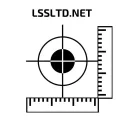What is a two peg test.
A two peg test is used for checking Automatic or Dumpy Levels. By comparing two sets of readings from two unequal lengths on the same two points, the accuracy of the Automatic or Dumpy Level can be calculated.
What is the purpose of a two peg test?
The purpose of the two peg test is to check the accuracy of the Auto or Dumpy Level whilst in use. If the auto or dumpy level accuracy is acceptable for the task at hand, then we can complete the task. If the auto or dumpy level accuracy is not acceptable then it will need to be adjusted or calibrated before being used again.
What is the acceptable error for a two peg test?
The answer to this very much depends on the task being carried out and the auto level or dumpy level being tested. The minimum acceptable error for any auto level or dumpy level should be less than 1mm for every 10m sighted through the telescope. For example, if you are reading an E-Grad Staff that is 50m away from the dumpy level, then you should be sighting through the telescope to the staff within 5mm of a level plane.

If you are not getting an acceptable error from your auto, dumpy or builders level, then it might be time for a new one. Check out the 5 best dumpy levels for under £200.
How often should a two peg test be carried out?
An Automatic Level or Dumpy Level should be checked at least every week or before any critical works are undertaken. This can be done easily and quickly by carrying out a two peg test.
The two peg test should be carried out by the team who will be undertaking the levelling task. This has the added benefit of establishing the total ability of the levelling team. If the team can’t accurately use the equipment, then even the most accurate of equipment will not yield satisfactory results.
How to do a two peg test.
Before carrying out the two peg test check the levelling bubble on the Auto Level. With the Auto Level set up, check that the bubble in the vial stays within the inner circle when rotated through 90 degree intervals. If the bubble stays in the middle, then proceed with the two peg test.
Before carrying out the two peg test check the levelling bubble on the Auto Level. With the Auto or Dumpy Level set up, check that the bubble in the vial stays within the inner circle when rotated through 90 degree intervals. If the bubble stays in the middle, then proceed with the two peg test.
1.) Set up the Auto or Dumpy Level on the tripod roughly centre from two fixed, stable points. The two fixed stable points should be at least 30m apart, ideally 50m apart.
2.) With the staff being held carefully take readings from first point A and then point B. Note down your staff readings for both points A and B.
3.) Now move and set up the Auto or Dumpy Level near either point A or Point B. This should be about 2m from the point, thus allowing the staff to be read easily.
4.) With the staff being held carefully take readings from the same points as before but record your staff readings as point A1 and point B1.
5.) Work out the difference in the level between point A and point B (A-B=X). Record value X.
6.) Work out the difference in the level between point A1 and point B1 (A1-B1=X1). Record value X1.
7.) Work out the difference in values between X and X1. This should be less than 3mm ideally.
The two peg test rule.
The two peg test rule states that the vertical difference X, between two points fixed points should always be equal to the difference between readings A and B no matter where the level is set up between the points A and B.

Worked example of a two peg test.
Reading A is 1.254
Reading B is 1.053
Reading A1 is 1.568
Reading B1 is 1.366
(A-B=X) (1.254-1.053=0.201) X=0.201
(A1-B1=X1) (1.568-1.366=0.202) X1=0.202
(X1-X=Accuracy) (X1-X=0.001) Accuracy is 1mm over 50m.
If the two peg test does not yield the satisfactory accuracy, then it is best to have it adjusted or repaired and calibrated by your specialist survey equipment supplier. You should also ensure that your Auto Level is calibrated yearly to ensure the correct accuracy is maintained.
Top Tip for Getting the Best Results When Checking Auto or Dumpy Levels using the Two Peg Test.
Whenever you are checking an Automatic (Dumpy) Level, or a Rotating Laser Level, or a Total Station, make sure that the tripod head is as close to being level as possible. Whenever I am carrying out these checks I like to use a bullseye spirit level like this one I bought from Amazon. Its 65mm diameter so it spans the tripod access hole and is large enough to be easy to set.

Related Articles
Quick and Easy Checks on Auto and Dumpy Levels
Can a dumpy level measure distances?

